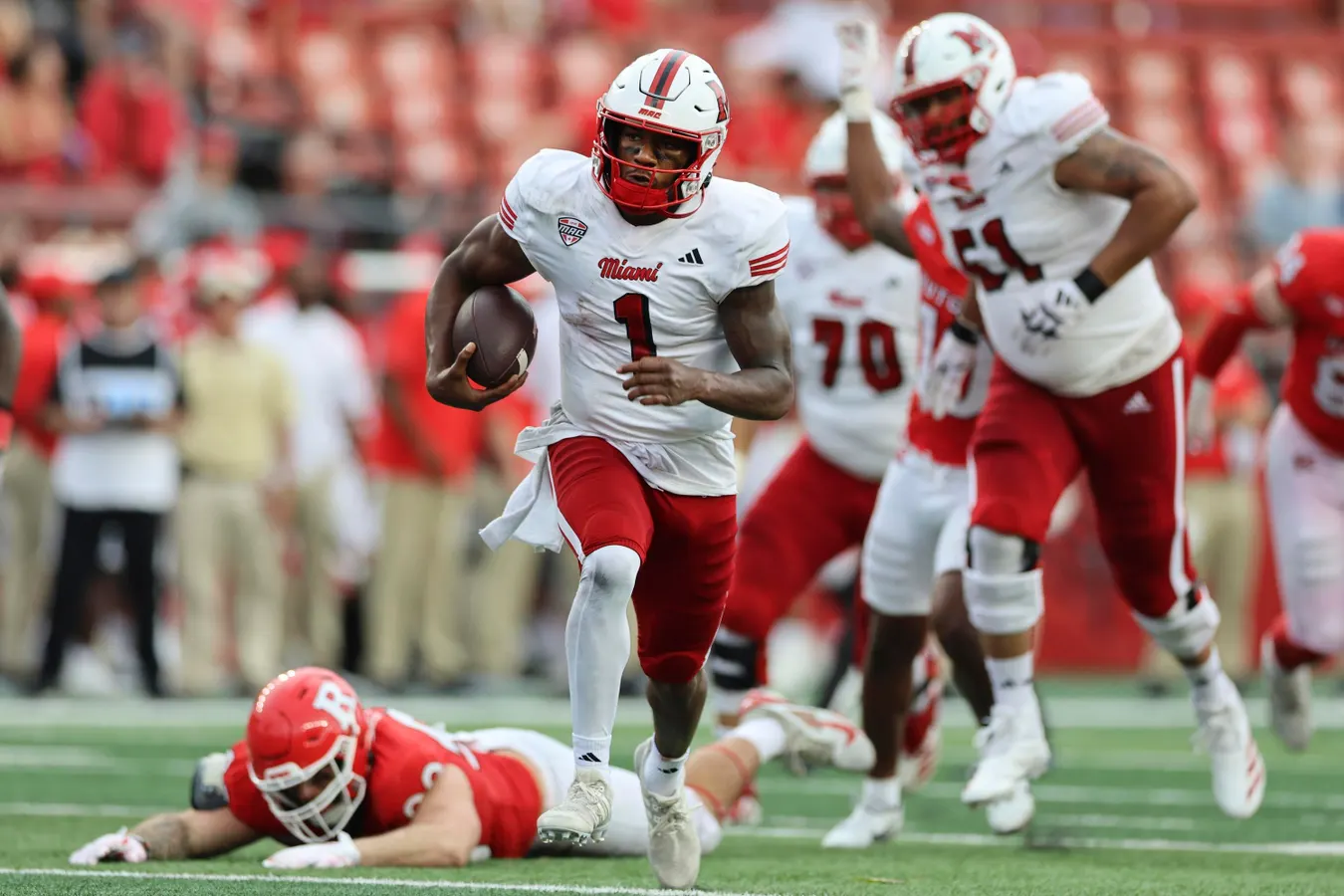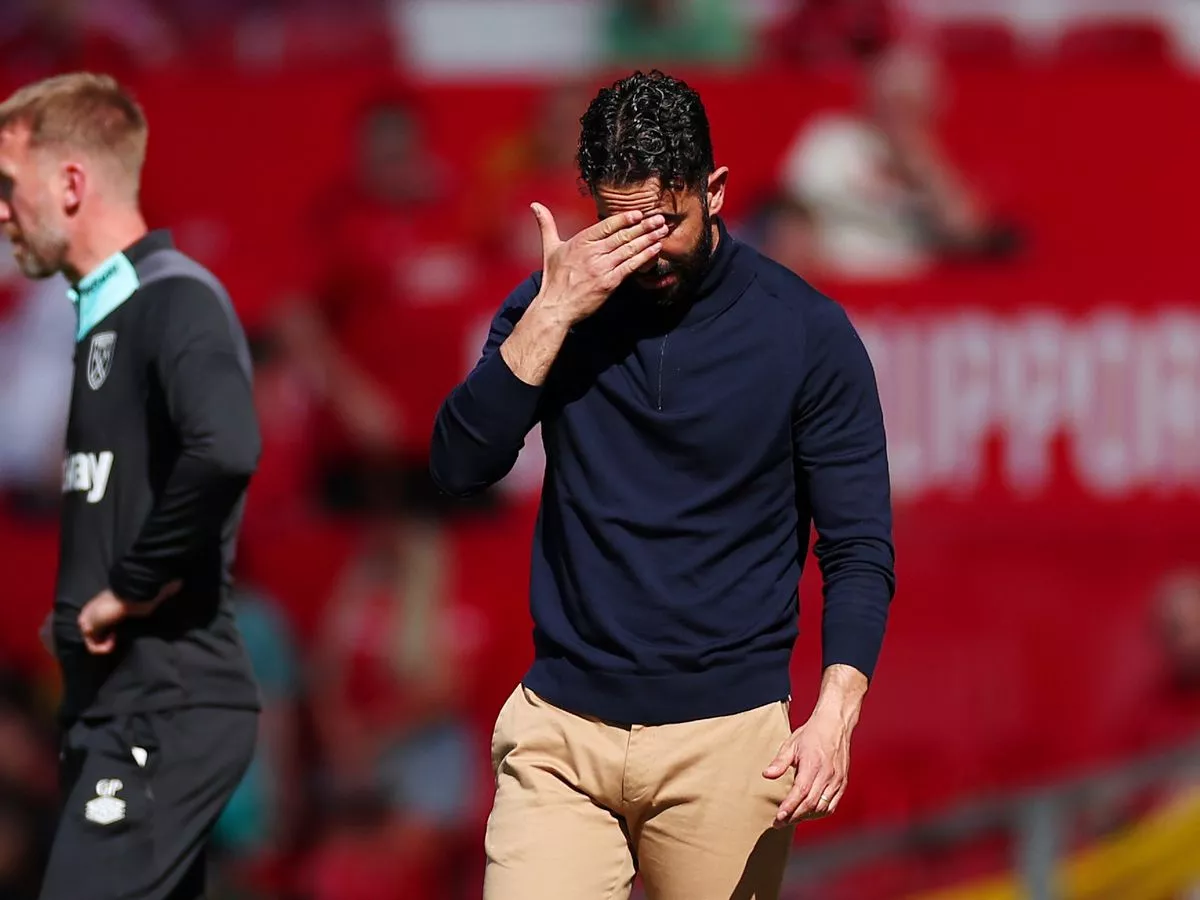Copyright Forbes

This month every year, Miami (Ohio) University athletics director David Sayler receives more messages than usual from friends and alums who work in football, including Baltimore Ravens coach John Harbaugh, a defensive back at the school in the early 1980s. Harbaugh doesn’t often have time to watch Miami games on Saturdays, but his mid-week schedule provides him the opportunity to see the RedHawks compete on television, as they have done each November for years. On Wednesday night, Miami hosts Toledo in a Mid-American Conference game, one of three league games held that night, usually considered an odd day for football. But not in the MAC. Instead, the league for more than a decade has become known for its unusual November schedule. Of the 25 MAC games this month, nine are on Tuesdays and seven are on Wednesdays, while two are on Fridays (the day after Thanksgiving) and seven are on Saturdays. Each of the league’s 13 schools play at least one mid-week game this season, while seven (including Miami) play three or more mid-week games. The conference plays all of its games on Saturdays in September and October, but come November, the schedule changes to mostly mid-week games thanks to a longtime partnership between the MAC and ESPN. Most of the mid-week games are televised on ESPN2 or ESPNU, while some are on the CBS Sports Network. CBS has a sub-licensing agreement with ESPN, which has the media rights to the MAC’s games. For diehard college football fans, and for people starving for live football, the MAC’s mid-week games in November have become a staple. The league has even adopted a tagline, MACtion, that was first used as a hashtag on Twitter in the early 2010s and is now a major marketing tool for the MAC. “I get a lot of notes from people who watch those games from across the country,” Sayler said. “(The mid-week games) definitely draw a much bigger interest in a nationwide footprint.” MORE FOR YOU Said MAC commissioner Jon Steinbrecher: “It’s really helped to build a national brand for the conference.” The Rise Of MACtion And Mid-Week Football The origin of MACtion began in 1999 when Rick Chryst took over as the league’s commissioner. Chryst was previously an assistant commissioner at the Atlantic Coast Conference, where he helped secure the league’s media rights deal with ESPN. At the time, the MAC was struggling on and off the field. In 1998, the league ranked as the worst in the nation, per College Football Reference, and had five schools among the bottom seven in Division 1-A in average attendance per home game. The MAC hadn’t had a regular season game televised nationally in more than a decade. Still, shortly after joining the league, Chryst called some friends in ESPN’s programming department to see if there was an open slot on the television schedule for the fall. “I go, ‘We’ll move any game anywhere to get on this year,’” Chryst said. “I got told, ‘We’d rather go dark.’ It was a little bit of a wake up.” ESPN’s executives later changed their minds when a slot opened. On Oct. 14, 1999, a Thursday night, ESPN televised then-No. 15 Marshall’s 38-14 victory over Toledo in large part because Marshall was undefeated and an intriguing story. The Thundering Herd had just joined Division 1-A in 1997 and went 10-3 and 12-1 in their first two seasons before finishing 13-0 in 1999 when quarterback Chad Pennington finished fifth in the Heisman Trophy voting. ESPN aired one MAC game apiece in 2000 and 2001 and two in 2002, both involving Marshall and its star quarterback, Byron Leftwich, a first round pick in the 2003 draft. Starting in 2003, thanks to a television rights agreement between the MAC and ESPN, the league’s games became a staple during the mid-week in November. That year, there was a MAC game on Tuesday, Wednesday and/or Friday each week in November. “It was the ultimate validation,” Chryst said. “If you had a nationally televised game on ESPN, it meant a tremendous amount.” For the MAC, playing in the mid-week was a way to have fans see its games and separate itself from the more popular and successful conferences. And for ESPN, it added live events on days that didn’t have football and in television windows that didn’t rate as well as others. The network televised Thursday games in the 1980s and 1990s, but save for Wednesday season openers in 1986 (Alabama v. Ohio State), 1987 (Pittsburgh vs. BYU), 1991 (Penn State vs. Georgia Tech) and 1992 (Stanford vs. Texas A&M), there were no regular season college football games on Tuesdays or Wednesdays from 1980 through 1999. And until the MAC deal, the mid-week games in the early 2000s were one-offs with multiple conferences rather than formal agreements that were part of media rights contracts. “They’ve been great partners in it,” said Kurt Dargis, who has worked on ESPN’s college football programming team since 2002 and now oversees the company’s scheduling of hundreds of games across multiple networks. “It’s been a great opportunity for exposure for them and a great programming opportunity for us.” The Pros And Cons Of Mid-Week Games Still, while the unusual schedule gives the MAC more national recognition, it also presents logistical, competitive and financial challenges. Players and coaches must adapt to having games on Saturdays in September and October and then transitioning to the mid-week, which can be difficult, especially for road teams that have to travel and miss classes. It also hinders recruiting efforts, as high school players often can’t travel to games during the week. And for administrators, it is more of a chore to attract fans to games on Tuesdays and Wednesdays. Miami (Ohio), for instance, drew an average of 7,397 fans to its mid-week home games in 2023 compared with an average of 17,393 for its other three home gams that year. A year ago, the school had an average of 5,610 spectators for its two mid-week home games and 12,408 for the other three home games. “I think the attendance issues and challenges are real, especially in a small college town like we are, where we’re relying on alums to drive to watch us from different cities around the state,” Sayler said. “That’s much harder to do on a weeknight, especially if you have a family and kids.” To address attendance concerns, the schools, conference office and ESPN have agreed to allow teams to play their rivals on Saturdays in September and October for two consecutive years and then the network can schedule a rivalry game on a weeknight in November. In 2023 and 2024, rivals Miami and Ohio University played on Saturdays, but they met last Tuesday at ESPN’s behest. On Wednesday, Miami has another mid-week game against Toledo, which is about 200 miles west of the RedHawks’ campus. While Sayler does not expect a huge crowd, he and his staff decided to have the players wear special uniforms with an old logo and gold accents to recognize the school’s Cradle of Coaches, an exhibit that honors current and former coaches with Miami ties. Besides Harbaugh, several Miami alums have gone on to successful careers, including Los Angeles Rams coach Sean McVay, former Michigan coach Bo Schembechler and former Notre Dame coach Ara Parseghian. The ESPN announcers on Wednesday will likely reference the uniforms and Miami’s coaching history to an audience that largely doesn’t know much about the school. “There’s good and bad with all of it, but at the end of the day, the exposure and the revenue that ESPN can help support our conference with is really what it comes down to,” Sayler said. “I think it's been a great partnership.” Conference USA Joins The Mid-Week Fray While the MAC remains the only league with mid-week games in November, Conference USA starting in 2023 scheduled mid-week games in October as part of a media rights deal with ESPN and CBS. Judy MacLeod, Conference USA’s commissioner, told the Associated Press when the league announced the agreement that the conference’s members had used the MAC as a model and noticed the higher television ratings for mid-week, unopposed games compared with Saturdays when there are so many major conference games to watch. C-USA’s deal runs through the 2027-28 school year. The MAC’s contract with ESPN, meanwhile, expires after the 2026-27 school year. As of now, the sides have not begun negotiating an extension. Dargis, ESPN’s senior director of programming, noted that ESPN has “loved” its partnership with the MAC and said “hopefully we’d be able to continue something similar,” but he acknowledged that “we really haven’t started having any of those conversations yet.” Steinbrecher, the league’s commissioner, said he will be in contact with the MAC’s schools and television networks about the league’s media rights and expects to have an agreement within the next six to 18 months. Steinbrecher would not say definitively that the midweek November games will continue past the 2026 season, but he made it clear that the ESPN deal has helped put the MAC on the college football map. “It’s provided a place to paint a picture about the conference,” he said. “You’re playing a collegiate event on nights when no one else is playing. That’s fairly unique, and it has captured people’s attention and brought this idea of MACtion to life.”



